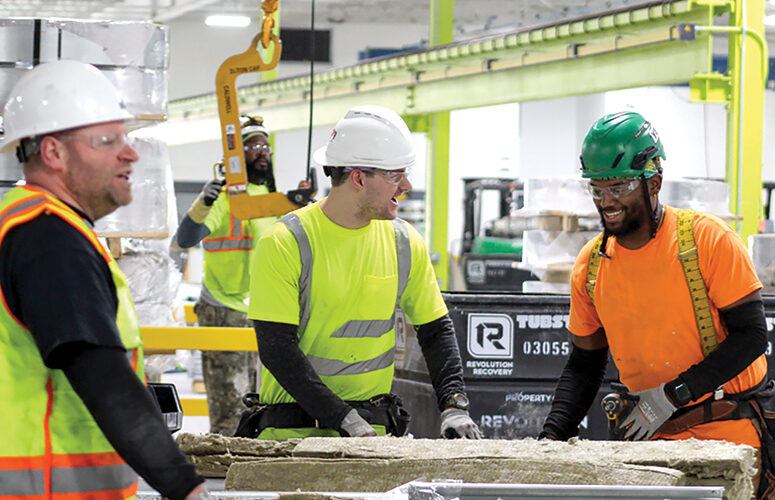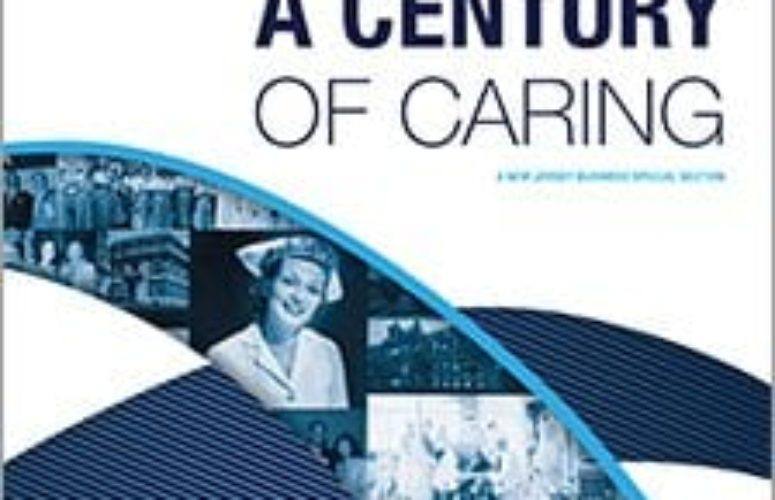
Collaborative Pathways to Workforce Success
Educators, employers, industry associations and trade unions are committed to preparing the state’s skilled workforce.
By Vince Baglivo, Contributing Writer On May 11, 2023Recent headlines have raised concerns about millions of workers not returning to existing or new jobs post pandemic. Reasons often cited behind this trend include lack of opportunity, training, and the potential to advance. While economic conditions remain turbulent, the US economy added more than a half million jobs in December. In New Jersey, a robust construction industry and emerging opportunities are contributing to significant demand for a skilled workforce, including everyone from carpenters to underwater welders.
A collaborative network of Garden State educators, employers, industry associations and trade unions are working together to create career pathways to new jobs and a skilled workforce. With exciting opportunities being created in the green economy and long awaited, transformational transit efforts like the Gateway tunnel project being funded, this collaboration between the state’s educational community, labor, and business organizations is helping prepare the workforce of today and tomorrow.
“Workforce development cannot always be just about your own house,” says Bernie Corrigan, president of IBEW Local 102. “Working together with the education and business community to help deliver long-term solutions within all industry sectors helps promote a viable business climate in New Jersey. Making the Garden State a more attractive option for business growth and retention provides a benefit to everyone at the table.”
IBEW Local 102 has been a staunch advocate for continuing education, with a tuition reimbursement program that continues to grow, and has allowed its membership to be more agile within the workforce. Education has allowed many of Local 102’s members to rise to management positions within the organization, while others have taken their talents to the local’s customer base.
The kinds of workforce development programs being offered are also evolving to meet the changing needs of projects ranging from residential and commercial towers to offshore wind turbines. Corrigan says that while CAD & BIM training is nothing new to Local 102, the organization has expanded its training room to accommodate the growing need for knowledge in this area. The room has all new equipment, including 3D printers. While this class typically falls under Local 102’s continuing education model, Corrigan expects this coursework to become part of the regular apprenticeship curriculum in the coming year. “CAD & BIM are becoming more commonplace especially within facilities such as data centers,” he points out.
Local 102 is also a supporter of a collaboration called NJ Pathways.
The NJ Pathways to Career Opportunities initiative brings together employers, industry associations, labor unions, education institutions, and workforce development partners to provide students, adult learners, and incumbent workers with the education and career pathways they need to find new careers, earn competitive wages, and ensure that employers have access to a highly skilled workforce.
NJ Pathways is expected to change how the state’s workforce is educated and trained to meet the ever-changing needs of industry. Now, on a statewide basis, education and industry are connected to benefit students, adult learners, workers and businesses to achieve boundless economic mobility and growth to meet the unpredictable and exciting future ahead.
Employers benefit from having a skilled workforce. Students and adult learners benefit from opportunities to earn college credits and industry valued credentials, which stack along the education continuum. These opportunities provide individuals with the ability to earn college degrees faster, thus enhancing career mobility. New Jersey’s economy benefits because employers have a pipeline of highly skilled, qualified candidates.
Catherine Frugé Starghill, Esq., vice president, New Jersey Council of County Colleges and executive director, New Jersey Community College Consortium for Workforce & Economic Development, believes programs like NJ Pathways are needed for the benefit of the industry, the future workforce, and our state’s economy.
“Gone are the days that workforce development and academia work in silos. The goal of the NJ Pathways initiative is to create transparent pathways where all students, incumbent workers, displaced workers, or those looking for career change, have a clear roadmap on what occupations are in-demand, and what training and education opportunities exist to prepare you for those in-demand occupations. Those training and education opportunities include the knowledge, skills and credentials employers require,” Starghill states.
“When we think of the construction industry and talk about workforce shortages, it is important to look holistically at the industry from the design and planning of projects, through the execution of construction, to commissioning of the final completed projects,” she continues. “Many occupations along a project’s life cycle are experiencing shortages or are anticipating the retirement of large percentages of their workforce. It is imperative to the industry to create awareness of these occupations, many of which do not require a college degree to enter, and there is the opportunity to move up the career ladder through the attainment of industry valued credentials and college degrees.”
There are currently 10 Centers of Workforce Innovation with the Pathways program, each focused on an occupation, with 22 education and training pathways. These enhanced pathways are better connected along the education continuum from high school to community colleges to four-year colleges and universities so that there are on-ramps and off-ramps to accommodate a student or adult learners’ education and training journey, which might not be linear.
“The NJ Pathways Program is bringing industry leaders, academia, labor unions, and business associations together to ensure that curriculum is aligned to meet the workforce needs of today and tomorrow,” adds Alexis Bailey, vice president of government affairs, New Jersey Business & Industry Association (NJBIA). “NJBIA has been a key player in enhancing connections and ensuring the voice of business is brought into the discussion.”
William Sproule, executive secretary-treasurer, Eastern Atlantic States Regional Council of Carpenters, notes that the Bureau of Labor Statistics (BLS) projects that the fastest job growth from 2020 to 2030 will be in the construction sector. Yet workforce shortages persist. The BLS projects 8% growth in that 10-year span, adding about 864,700 jobs. However, the BLS projects 1.2 million job openings, leaving a shortfall of more than 336,000 workers.
“Billions of dollars in federal and state money are being invested in our aging infrastructure and the infrastructure of the future,” Sproule adds. “Unions have a workforce, but they understand there will be a great demand for a new generation of workers. The Carpenters Union is investing in local workers through apprenticeship, pre-apprenticeship and strategic partnerships to attract and educate the best candidates to build the future of America.”
Sproule believes the only way to ensure the availability of skilled workers for existing and planned infrastructure projects is to invest in training and education to help workers obtain the skills they will require. The American Jobs Plan released by the White House in March 2021, noted that investing in offshore wind development could create tens of thousands of jobs, affecting engineering, construction, operations and management.
The New Jersey Offshore Wind Strategic Plan says that offshore wind power will create 6,000 to 8,000 jobs per year, culminating in 68,349 job years from 2020 to 2035. A report released last September by the Wind Institute for Innovation & Training titled, “New Jersey’s Offshore Wind Workforce Assessment Through 2035,” concluded the offshore wind industry is projected to create more than 300 different employer occupation opportunities. New Jersey is on the frontline of change, as the state’s shoreline will play a significant host to wind power. Our local workforce will require individuals who have the training and are willing to enter this new, burgeoning opportunity that cuts across various sectors of the construction trade.
“The construction and maintenance of offshore wind turbines, as well as the heavy construction, pile driving, and commercial diving skills required for all the federal infrastructure investment needs more skilled labor,” Sproule points out. “EAS Carpenters has invested in the training necessary to meet this need. Our expanded Heavy Construction, Piledriving, and Offshore Wind Training Facility at our Thomas C. Ober Carpenter Training Center, and the new EAS Carpenters Diving School, will teach all the skills apprentices and journeyperson carpenters need to complete these jobs at a high standard.”
“We are so fortunate to have a wealth of talent and leadership in New Jersey,” NJBIA’s Bailey concludes. “There is a lot of great work being done across the state. Industry leaders are eager to collaborate and play an active role in the success of the next generation of workers. There is certainly a lot to be optimistic about in terms of how New Jersey is tackling workforce challenges.”
To access more business news, visit NJB News Now.






